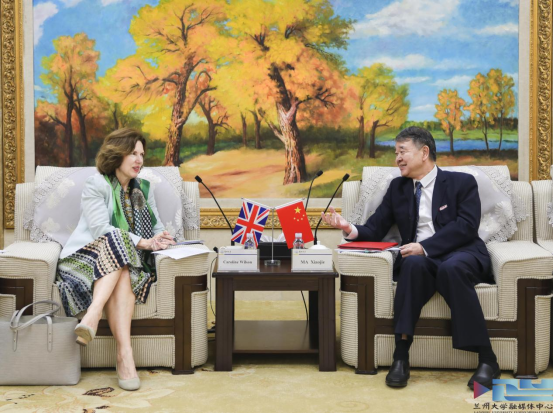Under the instruction of Prof. Guan Xiaodan in College of Atmospheric Science of LZU, Ma Jieru, postgraduate student enrolled in 2016, published her latest research findings online as first author in Scientific Reports of Nature on June 30th. The thesis was titled with "Mechanism of non-appearance of hiatus in Tibetan Plateau", which is the 3rd time that members in the team of Prof. Huang Jianping have published their research findings as the first author. The study showed that during the warming stoppage period, continuous warming in Tibetan Plateau(TP)was the result of uniform dynamically-induced temperature (DIT) warming over a large scale and enhanced radiatively-forced temperature (RFT) warming at a regional scale, which quantified the effect scope and density of varied thermal factors in radiation temperature changes for the first time.
Climate and weather in TP has dramatically affected the energy and hydrological cycle in East Asia, South Asia and Central Asia, which further impacted climate pattern of these regions, the process of Asian monsoon and the atmospheric circulation in northern hemisphere. Recently, during the emergence of warming stoppage in global mean temperature, the climate change in TP has been greatly concerned by the domestic and overseas researchers from different fields. Studies demonstrated that the world has been in the warming stoppage period in recent fifteen years, as the area of great importance, the Tibetan Plateau, however, did not appear to have any warming stoppage in the hiatus period, which highlighted the specificity of TP and the significance of this research.
The abstract of the thesis is as follows:
In the recent decade, hiatus is the hottest issue in the community of climate change. As the area of great importance, the Tibetan Plateau (TP), however, did not appear to have any warming stoppage in the hiatus period. In fact, the TP showed a continuous warming in the recent decade. To explore why the TP did not show hiatus, we divide the surface air temperature into dynamically-induced temperature (DIT) and radiatively-forced temperature (RFT) by applying the dynamical adjustment method. Our results show that DIT displayed a relatively uniform warming background in the TP, with no obvious correlations with dynamic factors. Meanwhile, as the major contribution to warming, the RFT effect over the TP played the dominant role. The warming role is illustrated using the temperature change between perturbed and control simulation responses to CO2 or black carbon (BC) forcing via Community Earth System Model (CESM). It shows that an obvious warming in the TP is induced by the CO2 warming effect, and BC exhibits an amplifying effect on the warming. Therefore, the continuous warming in the TP was a result of uniform DIT warming over a large scale and enhanced RFT warming at a regional scale.
(Translated by Song Rong; proofread by Li Rui)




